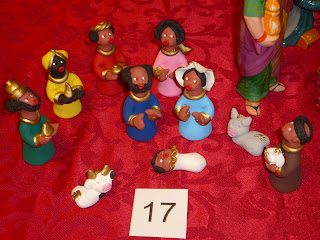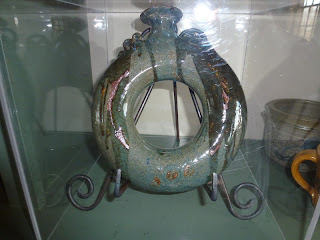I LOVE NATIVITIES!
They are my very favorite part of Christmas decorating and we just happen to be living in nativity heaven. They are everywhere. There is a beautiful one at the Nauvoo Visitor's Center.
And outside the temple.
And some around town.
Some of the sites have them.
We even had a LIVE nativity.
But best of all, there was a display of 160 nativities from all over the world that people in the community provided. I've never seen so many all in one place before. There were big ones, little ones, simple ones, fancy ones & silly ones but they all show love for the Savior. I wanted pictures of all of them but we were short on time and Elder Knudsen thought I got more than enough pictures. I'll see how many I can show you. It takes forever to upload (or download - or whatever you do to get pictures).
OK - I guess that's enough. Aren't you glad I didn't make you sit through all 160 of them? I wanted to give you an idea about how different they all were. But I do have to show you a couple more. The nativity at the site where we are assistant site leaders, The Family Living Center, has a nativity made out of rope.
When I first saw it I asked Elder Knudsen if he could make me one. What a question - OF COURSE HE COULD!!! In fact - it took him a lot less time to make them than it took me to dress them. It's my favorite of them all. What do you think?
We wish you all the Merriest Christmas ever and remember that Christmas begins with Christ. He is the reason for all the good in this world. We are grateful that He guides and directs our life and hope that you will allow Him to do the same for you.
MERRY CHRISTMAS



























.JPG)
























